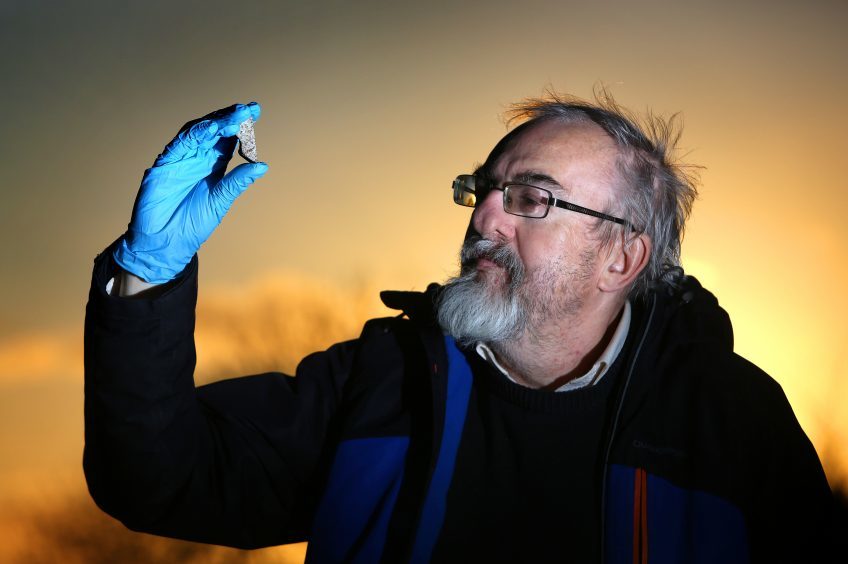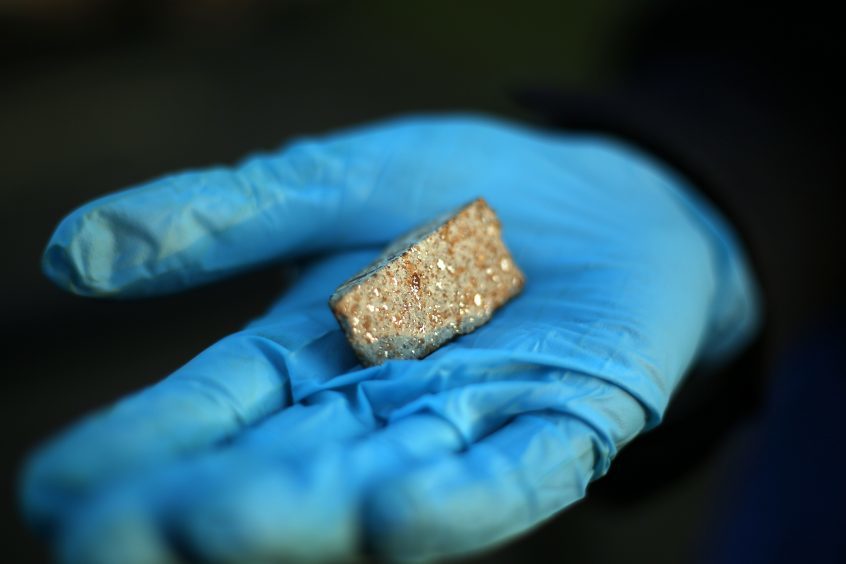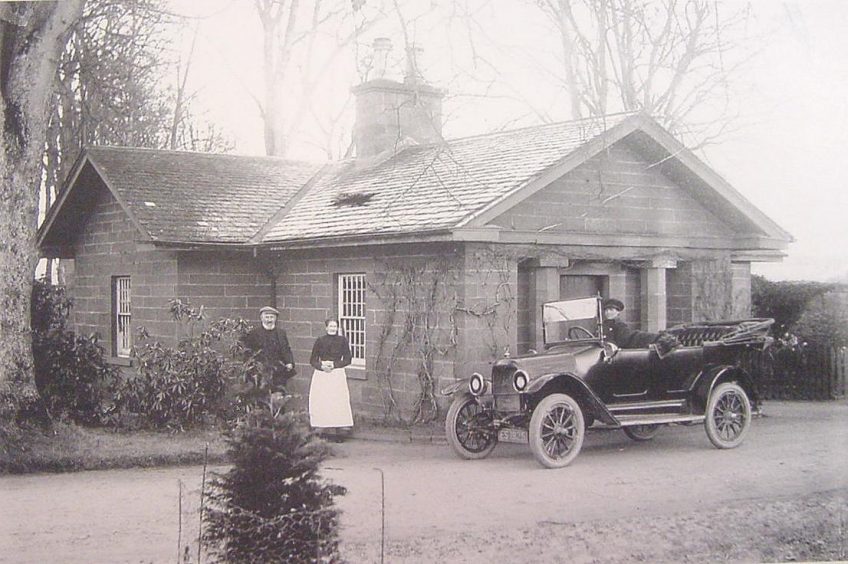100 years ago this weekend, a meteorite ended its 4.5 billion-year journey through space when it blazed across the skies and crashed into the Strathmore countryside. Michael Alexander learned about a fragment now housed in Dundee.
Hurtling through space at an incredible 150,000 kilometres per second, the 17 kilogram former asteroid, left over from the birth of the solar system 4.5 billion years ago, entered the Earth’s atmosphere somewhere over Northumberland and continued in a north-westerly direction towards the east coast of Scotland.
From Hexham to St Boswells and Bridge of Allan to Aboyne, it was seen as a bright sparking fireball streaking across the afternoon sky.
But while most meteors simply burn up in a flash around 60 miles above the Earth, this ancient lump of stony rock was more resilient until at 1.15pm on December 3 1917 it exploded several miles up to the west of Dundee, sending at least four fragments hurtling towards Strathmore below.
According to eyewitness accounts gathered by Henry Coates, the then curator of Perth Museum, the explosion was heard in Dundee, St Andrews, Forfar, Cottown and Burrelton with witnesses describing a “loud explosion lasting two minutes” followed by a “humming sound like a small airplane”.
A Mrs Miller from Burrelton saw “three fireballs” while witnesses in Dundee thought the explosion was due to work in one of the local quarries.
Four meteorites were recovered in a line between South Corston in Angus and Easter Essendy in Perth and Kinross.
The first stone that fell was at South Corston and weighed just over a kilogram.
At Keithick the stone hit the roof of the south lodge and was found later in the rafters. It also weighed just over a kilogram as did the Carsie specimen.
At Easter Essendy the finder was guided to the spot where it fell by the commotion caused amongst a flock of sheep who were feeding in a field.
It weighed about 10 kilograms and was later dissected at the National Museum of Scotland for analysis at the Natural History Museum in London.
The McManus Museum in Dundee bought an Essendy fragment at auction in 2011 and today it is on display at the Mills Observatory as part of a wider exhibition.
“Four fragments were collected in Strathmore but there was probably a massive strewn field – a lot of tiny fragments that were never actually found,” explains David Lampard, curator of geology and zoology at The McManus.
“They fell in a line between Coupar Angus and Blairgowrie and this particular fragment we have was found at Easter Essendy.”
Meteorites are the oldest rocks in the solar system and most come from the asteroid belt between Mars and Jupiter. They start out as asteroids but if their orbit is disturbed, pieces may enter the Earth’s atmosphere when they are called meteors – only being called meteorites if they make landfall.
It is thought that about 2,235 meteorites land on Earth each year – including six in Scotland.
In the UK, 21 meteorites have been recorded between 1795 and 1999 including High Possil (1804), Perth (1830) and Strathmore (1917). Fragments of a meteorite were found in Glenrothes in 1998.
Of course everyone knows about the giant meteorite that wiped out the dinosaurs 65 million years ago.
NASA’s Near Earth early warning programme has mapped 885 near-Earth objects larger than a kilometre in diameter with 157 identified as possibly dangerous.
But the probability of actually being hit and killed by a meteorite is one in 700,000, says Mr Lampard, with the chance of a large life destroying impact 1.5 million to one. Fifty tonnes of material hits Earth each day but most arrives unnoticed, he adds.












